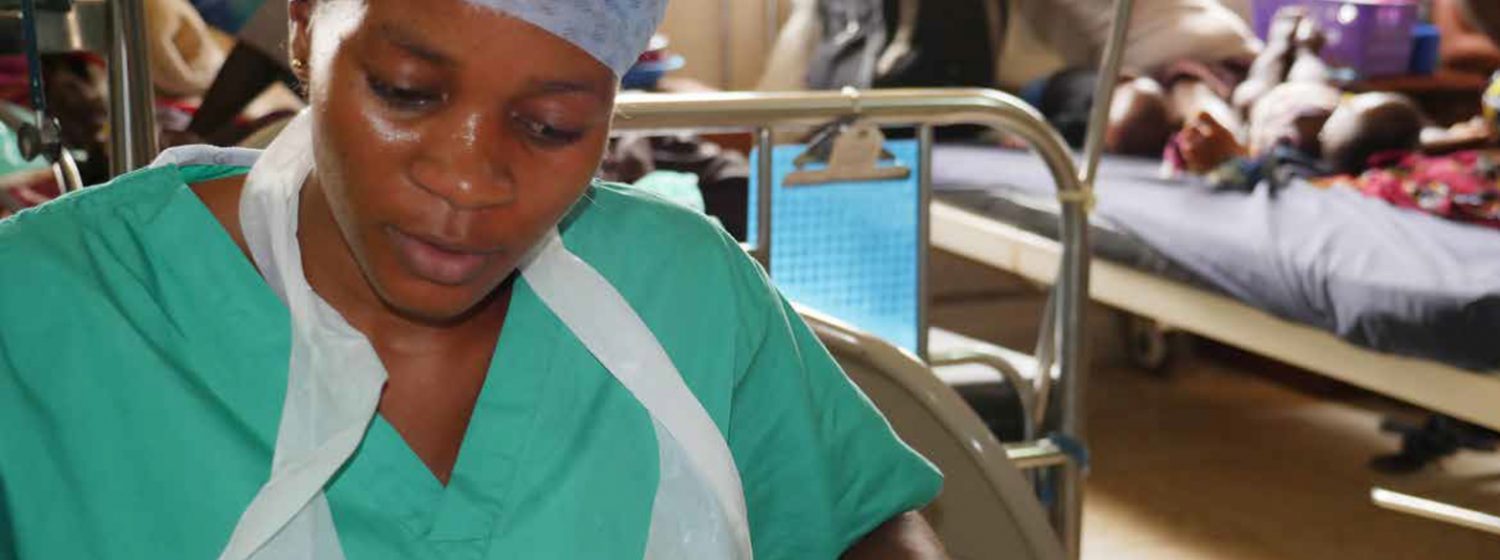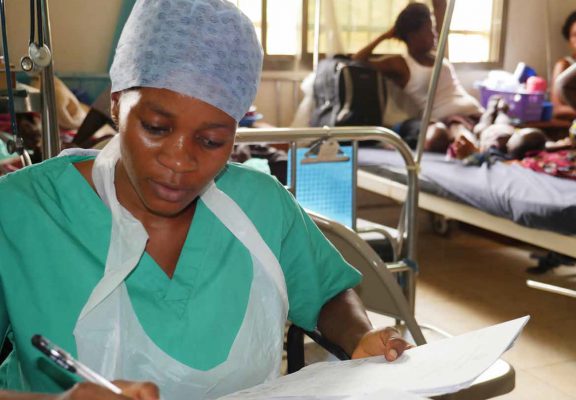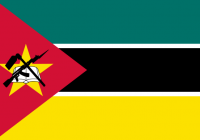


Mozambique
Mozambique is a southern African nation whose long Indian Ocean coastline is dotted with popular beaches like Tofo, as well as offshore marine parks. Its population is 25 million and GDP per capita of USD 605.
Since independence in 1975, Mozambique’s health policies have promoted broad and equitable access to basic health services, and the majority of the population has access to basic health services. However, the system still struggles to reach some rural areas and provide high quality care, and the high burden of HIV, tuberculosis, and malaria creates intense pressure on the health care system. Mozambique’s health strategies aim to reduce prevalence, illness and death related to HIV and TB, and reduce malaria incidence and mortality. The country is successfully scaling up the number of patients on antiretroviral therapy, preventing mother-to-child transmission of HIV, providing targeted HIV prevention packages to key populations, and expanding access to treatment for first-line and multidrug-resistant tuberculosis. Mozambique is close to reaching universal access to malaria prevention with insecticide-treated net distribution campaigns and indoor residual spraying. Further investments in key components of the health system, such as human resources, data systems, and the supply-chain, are critical to ensure higher quality services and meet increasing demand.
AHO PRIORITIES FOR HEALTH DELIVERY PLAN IN MOZAMBIQUE
- Health monitoring.
- Integrated health information system.
- Prevention and control of vector-borne diseases.
- Health systems and services–reform process.
- Human resources development.
- Health and environment.
- Disasters and emergencies.
- Childhood illness.
- Health promotion.
- HIV/AIDS, STD, and TB.
- Food and nutrition security.
- Women, health, and development.
- Violence, gender, rehabilitation, and health of indigenous populations.
PROGRAMMES & PROJECTS
1. MANAGEMENT ACTIVITIES OF THE REPRESENTATIVE OFFICE
PURPOSE
To develop and maintain adequate organizational conditions to ensure that technical cooperation processes are carried out efficiently and effectively, according to institutional standards and procedures.
EXPECTED RESULTS
- Management standards and procedures of AHO applied adequately, making a satisfactory contribution to the development and strengthening of political, technical, and management processes.
2. FOOD AND NUTRITION
PURPOSE
To promote inter-sectoral action and social participation in addressing FNS at the national and local levels
EXPECTED RESULTS
- Coordination established with other sectors and actors involved in the implementation of public policy related to FNS.
- Efforts to raise awareness undertaken to achieve equity in FNS.
- Educational models established for the adoption of healthy eating and lifestyles.
- Knowledge about food and nutrition increased.
- Food and nutrition content incorporated into other programs.
- Operating mechanisms established for implementing micronutrient projects.
3. HEALTH PROMOTION AND PROTECTION
PURPOSE
To adopt health promotion principles when formulating and implementing projects and programs in health and development
EXPECTED RESULTS
- Departmental and municipal development committees created to apply the principles of health promotion.
- Priority projects and programs focused on health promotion designed and implemented
- Mass communication plans aimed at promoting healthy lifestyles, prepared at the municipal and departmental levels.
- Sexual and reproductive health of the population improved, and maternal and perinatal morbidity and mortality reduced.
4. ENVIRONMENTAL PROTECTION AND DEVELOPMENT
PURPOSE
To consolidate national capacity to recognize, manage, and resolve the country’s environmental health problems, with emphasis on health promotion, surveillance, and the prevention and mitigation of disaster risks.
EXPECTED RESULTS
- Surveillance and control programs and activities in environmental health strengthened and sustained, especially those related to water quality.
- Networks for coordination and information exchange among institutions, sectors, and other entities strengthened.
- Instruments for planning, programming, and regulation to improve environmental quality and services up and running.
- Community mobilization, inter-sectoral coordination, and primary environmental care strengthened.
- Pre-investment, investment, operation, maintenance, and administration of the environmental health services strengthened at the national level, in terms of the capacity to prevent and mitigate disasters, with emphasis on reducing vulnerability, and on urban and rural water and sewerage systems.
- Capacity to deal with and resolve environmental issues strengthened at the central, departmental, municipal, and local levels.
5. DEVELOPMENT OF HEALTH SYSTEMS AND SERVICES
PURPOSE
To implement health sector reform with a significant increase in coverage, in a manner that is financially sustainable, high-quality, and efficient
EXPECTED RESULTS
- The essential public health functions related to the steering role, regulation, and equitable access by the population to basic health services, implemented.
- Quality of health services improved and impact of emergencies and disasters on health reduced.
- Attainment of the medium-tern objectives of the national drug policies promo ted and technical support in priority areas received.
- Strengthening of national capacity to perform the essential public health functions of human resources and health work force development begun.
6. HEALTH AND HUMAN DEVELOPMENT
PURPOSE
To strengthen the capacity for epidemiological analysis and the integrated health information system, and for identifying the causes and determinants of the health process, giving priority to neglected groups, based on equity and gender criteria.
EXPECTED RESULTS
- Technical groups consolidated throughout the country to promote the application of health concepts and research methodologies.
- Technical group on bioethics created at the national level.
- Integrated health information system strengthened at the national level, fo r better planning of interventions based on equity criteria.
- The gender approach integrated into health, within the framework of sectoral reform, and the model of response to gender violence strengthened.
- Virtual Health Library of Honduras developed and strengthened, including all components and specialized issues, and dissemination of this information promoted.
7. DISEASE PREVENTION AND CONTROL
PURPOSE
To reduce incidence and prevalence of communicable diseases and chronic noncommunicable diseases
EXPECTED RESULTS
- Annual operating plans prepared on the basis of local epidemiological characteristics, including integrated actions and equity and community participation criteria for the prevention and control of preventable diseases.
- Interventions for health promotion, disease prevention, and the control of chronic noncommunicable diseases strengthened at the national level.
- Epidemiological surveillance activities and the capacity for analysis, research, and local response strengthened, giving priority to higher-risk areas with greater epidemic potential.
8. PROGRAM ON EMERGENCY PREPAREDNESS AND DISASTER RELIEF
PURPOSE
To help reduce the vulnerability of health services and put measures in place for health sector response, particularly at the local level.
EXPECTED RESULTS
- AHO organised to respond to emergencies and disasters of any kind.
- Local and community emergency health plans harmonized with emergency plans for healthy cities.
RESOURCES (USD)
AHO MOZAMBIQUE 2020 (USD million)* based on 2017 pop 29.67 World Bank
| SO | BUDGET ITEM | AMOUNT* |
| 1 | Combating communicable diseases |
494 |
| 2 | Tackling non communicable diseases |
500 |
| 3 | Addressing determinants of health & risk factors |
495 |
| 4 | Modernising health system and health service |
493 |
| 5 | Improving preparedness, surveillance and response |
492 |
| 6 | Developing good governance & corporate services |
493 |
| Total |
2,967 |
AHO estimates that it needs to spend at least USD100 per capita on health to meet the basic health needs of the people in Africa. This is too far below developed countries e.g. in England it is US$1,300 per capita (2017)

